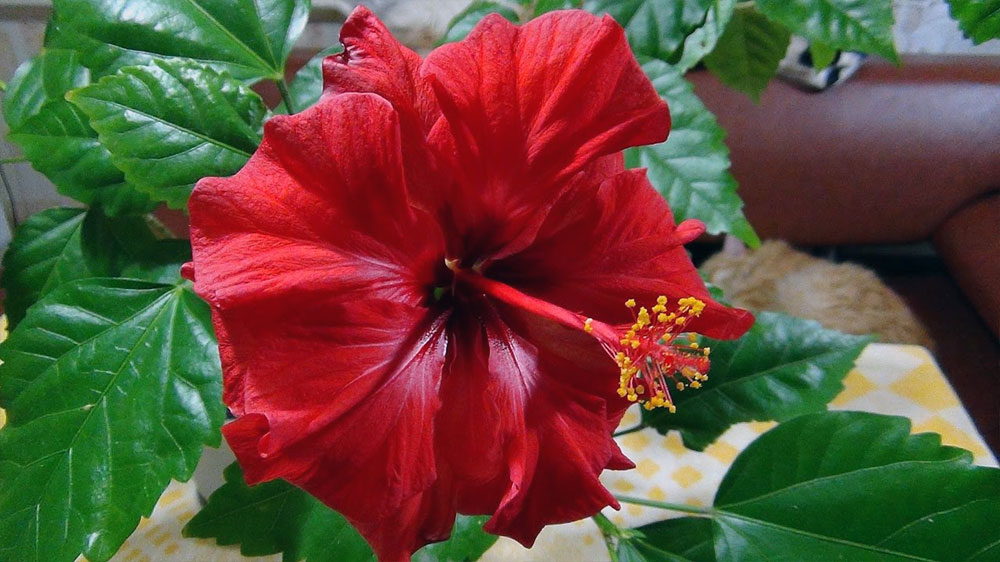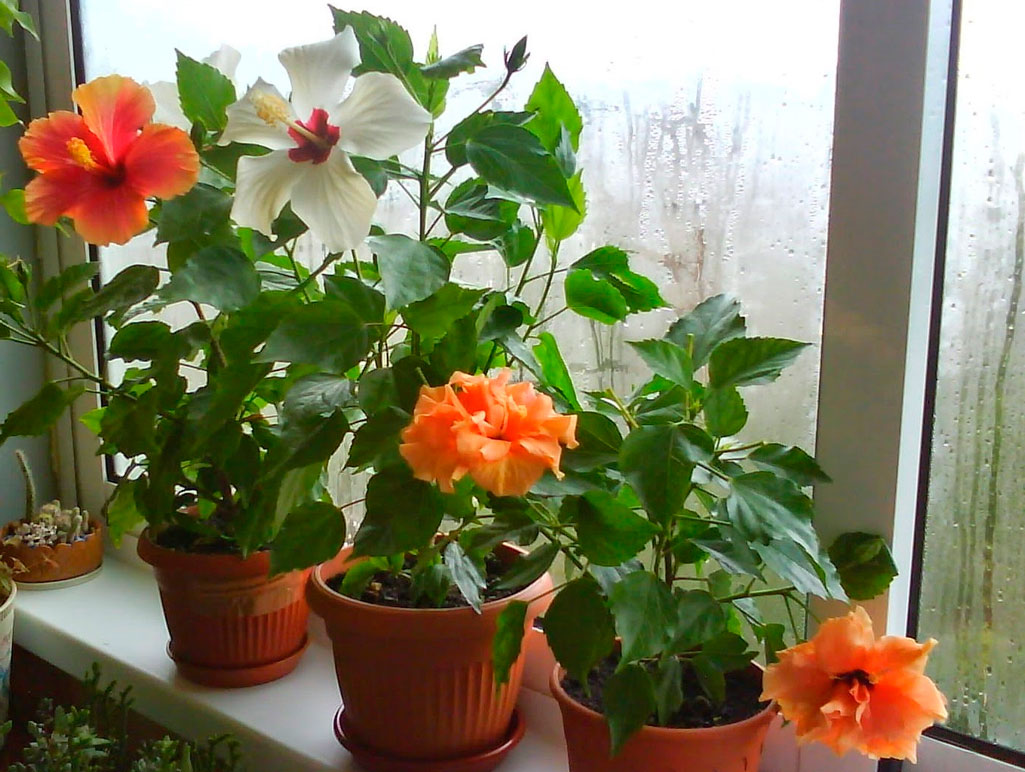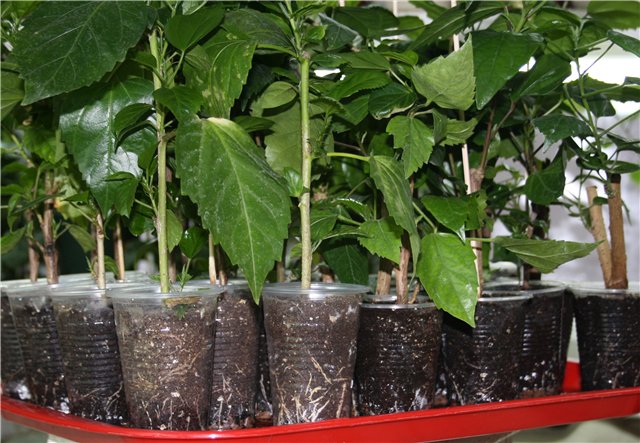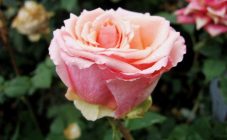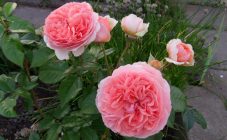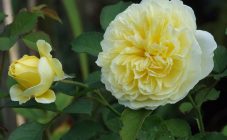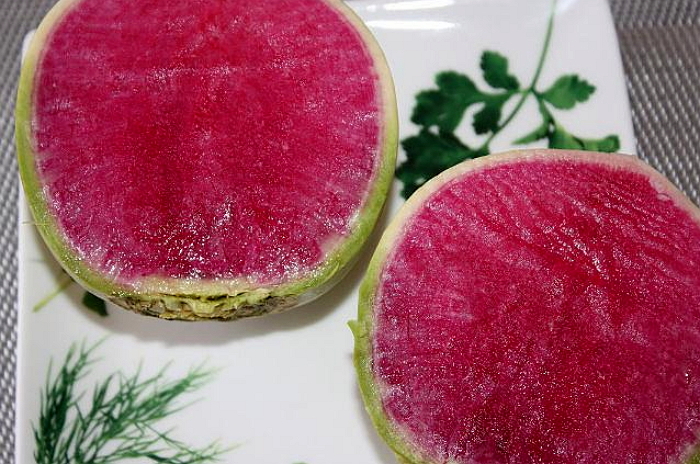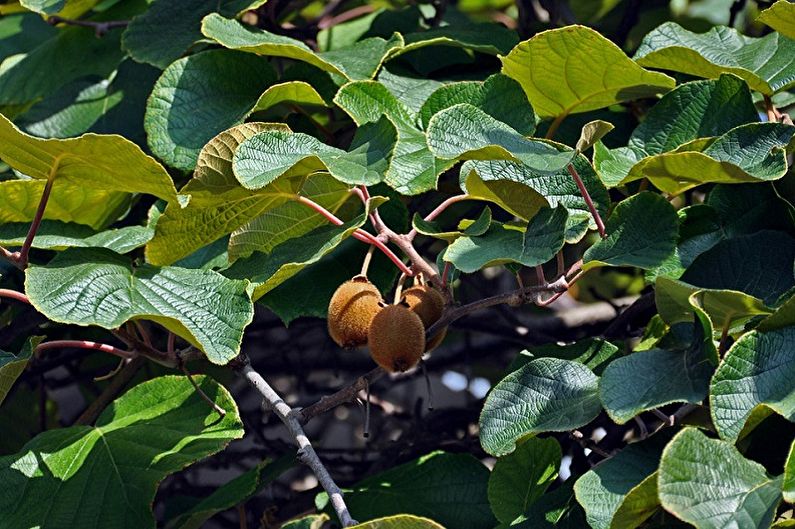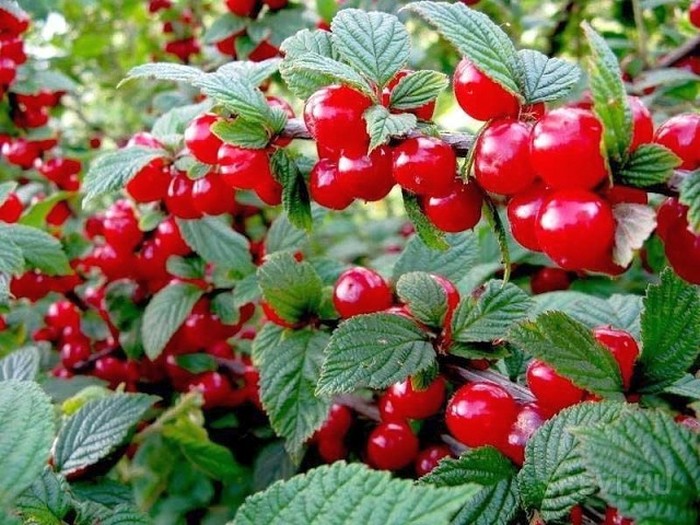Content:
Indoor hibiscus, Chinese rose is a flower that can rightfully be considered one of the most interesting options for home and office. These bright and luxurious buds have come to the hearts of many flower growers. And what gorgeous leaves sparkling in the sun with a glossy shine!
Description
Many people probably know what hibiscus flowers look like. Their size can be called large. The main characteristic feature of the shrub is the stamens and pistil, grown together and sitting in large, delicate and maximally open petals, forming a rod - it is long, higher than the petals. Hibiscus flowers have different shades.
The Chinese rose fascinates with its attractive appearance and charm inherent in this plant. Many people wonder if hibiscus is a flower or a garden tree? The crown is covered with emerald green leaves, and the tree trunk gives the Chinese rose a resemblance to a small tree.
A Chinese rose (Hibiscus) grown outdoors can be seen growing up to 3-4 meters. The maximum height of hibiscus grown in a room is about 1.5 m. It is recommended to grow hibiscus in a tub. A powerful root system and thin but massive branches require a lot of space.
Often, the shrub is grown at home, like a standard tree. I must say that hibiscus is not only a beautiful tree with colorful flowers, it is also a wonderful food product. Useful teas are made from dried fruits, known to all for their beneficial properties - "Hibiscus", "Sudanese rose".
Flowers of new types of geranium and terry balsam, some varieties of primrose and gardenia, Kalanchoe, terry adenium, peony and ranunculus, as well as some varieties of tulips, are similar to hibiscus.
Care and cultivation
Watering
While the stage of active development continues, and this happens in spring and summer, the watering of the Chinese rose should be of high quality. Drying of the soil should not be allowed - only its top layer, a few centimeters, should dry out. Air temperature is also critical. For example, in summer, the plant needs watering every other day, otherwise rapid drying of the soil cannot be avoided. In addition, the plant will not bloom in arid soil either. By autumn, the frequency of irrigation decreases, and after reaching the mark on the thermometer of 16 ° C and in winter, you need to water the flower even less often - once a week is enough.
Top dressing
In the spring, with the onset of active growth, the Chinese rose requires mandatory feeding. It is produced about once every two weeks. The best option is complex fertilizers, for example, Ideal or Rainbow. The biological fertilizer Baikal EM1 is no less useful. Once every 10 days, the plant is fertilized during the flowering period. Fertilizers are not applied during winter. Before feeding, the bush should be watered. This must be done to prevent accidental burns from damaging the hibiscus roots.
Lighting
The Chinese rose needs high-quality lighting after planting, but this has nothing to do with bright sunlight. It is better to keep the tree in a dark place.Staying a flower in the bright sun is fraught with leaf burn. A small partial shade is ideal. If the apartment is on the sunny side, and there is no shadow, hibiscus can be placed far from the window or shaded.
Temperature
The hibiscus loves heat, but not heat. The temperature he needs in summer is 25-28 ° C. But, in no case, not higher - the flower will die. The optimum temperature for a comfortable wintering of the Chinese rose is 18 ° C. Lowering the mercury column to the 16-degree mark is strictly not allowed. Also, you cannot take the flower out into the draft.
Humidity
Recommended humidity for hibiscus is 50%. To provide the flower with comfort, it is advisable to install a decorative compact fountain next to it or to limit yourself to a vessel with water. Another great option is to place the pot in a tall tray filled with expanded clay or pebbles and water. But the pot, in order to avoid rotting of the root system, should be placed not in water, but on stones.
Transfer
This strong plant grows rather quickly, therefore, it will need a transplant, one way or another. Young bushes are replanted annually. It is advisable to do this in spring or summer. In the process of transferring the plant to another pot, the top soil layer is replaced with a new one. At the bottom of the container, drainage is first laid out (small pebbles or expanded clay), and then a small amount of substrate.
Reproduction of hibiscus
There are the following ways to propagate the Chinese rose:
- propagation by seeds;
- cuttings propagation;
- vegetative reproduction;
- division of the bush.
Throughout the year, hibiscus can only be propagated by cuttings. Cuttings are especially well received in spring or summer.
The mother plant should be watered and then cut off. Removing unpresentable shoots, branches with a solid green stem and internodes on it are also removed. There are, as a rule, 2 or 3. The lower leaves on this stem, in order to prevent decay processes, are cut off. Cuttings selected for propagation are rooted in water or earth.
What is the principle of giving preference to this or that type of reproduction? Usually they start from:
- type of plant;
- age;
- general condition;
- season.
Diseases and pests
Poor quality care entails negative consequences and various kinds of diseases:
- leaves from a lack or excess of moisture acquire a yellow or brown tint;
- due to low humidity or insufficient spraying, the leaves fall off and wither;
- due to low temperature or dry air, buds fall off;
- from a lack of fertilizing, the tips of the leaves turn brown.
The appearance of harmful insects is also possible, among which the most frequent unwanted guests are:
- aphid;
- spider mite;
- shield;
- whitefly.
For insects, special preparations are used, which can be found in gardening stores.
From the above, we can conclude that hibiscus is desirable in any home. It is not so difficult to care for it, but it will bring a lot of benefits and pleasure - some varieties of the flower are suitable for brewing the most useful and delicious tea.
